Mitochondria are essential for life and they play an important role in the energy process within the cell. Mitochondrial dysfunction leads to imbalanced cellular energy conversion, mainly in tissues. Regulation of energy metabolism by environmental variations might be associated with age-related metabolic diseases through changes in mitochondrial oxidative phosphorylation (OXPHOS) which leads to mitochondrial dysfunction. These lead to neurodegenerative diseases like Alzheimer’s, Parkinson's' etc.
What is Mitochondria?
A mitochondrion (plural: mitochondria) is a membrane-bound organelle found in the cells of most eukaryotic organisms. Mitochondria are vital, membrane-bound organelles within eukaryotic cells, renowned as cellular powerhouses. Comprising an outer membrane, inner membrane, and matrix, mitochondria generate energy through cellular respiration, converting organic molecules into adenosine triphosphate (ATP). Beyond energy production, they influence cellular processes, such as the cell cycle and apoptosis. Notably, mitochondria possess their DNA. These multifunctional organelles underscore their pivotal role in cellular functions, emphasizing their significance in the workings of eukaryotic organisms.
Role of Mitochondria in the human body
Mitochondria are often referred to as the "powerhouses" of the cell because one of their main functions is to generate energy in the form of adenosine triphosphate (ATP). In addition, they play a role in various cellular processes, including the regulation of the cell cycle and cell growth, as well as the mediation of cell death (apoptosis).
- Energy Production: The primary function of mitochondria is to produce energy through cellular respiration. They convert nutrients, such as glucose and fatty acids, into ATP, a molecule that serves as the main energy currency of the cell.
- Metabolism Regulation: Mitochondria are involved in regulating the metabolism of carbohydrates, fats, and amino acids. They play a key role in breaking down and processing these molecules to generate energy.
- Apoptosis (Programmed Cell Death): Mitochondria are central to the regulation of apoptosis, a programmed cell death process essential for maintaining tissue homeostasis and eliminating damaged cells.
- Calcium Homeostasis: Mitochondria help regulate intracellular calcium levels, which is critical for various cellular processes, including muscle contraction and signal transduction.
- Cell Signaling: Mitochondria contribute to cellular signalling pathways, influencing processes such as cell differentiation, proliferation, and the cell cycle.
- ROS Regulation: Mitochondria are a major source of reactive oxygen species (ROS). While excessive ROS can be harmful, moderate levels are involved in cellular signalling and defence mechanisms.
- Heat Production (Brown Adipose Tissue): In specialized brown adipose tissue, mitochondria contribute to non-shivering thermogenesis by generating heat, which is important for temperature regulation
- Genetic Inheritance: Mitochondria contain their genetic material (mitochondrial DNA), and mutations in mitochondrial genes can lead to various inherited disorders.
What is Mitochondrial Dysfunction?
As we age, mitochondrial function tends to decline, leading to a reduction in energy production. This decline is associated with an increased production of reactive oxygen species (ROS), which can cause cellular damage and contribute to the ageing process.
When the mitochondria fail to function normally or to meet the energy requirement of the body, it leads to mitochondrial dysfunction. The symptoms include seizures, strokes, digestion, walking, speech issues, and heart and kidney issues. It affects more than one organ. It also leads to neurodegenerative diseases. The causes of mitochondrial dysfunction are:
- Exposure to environmental factors
Pharmaceutical drugs- Inhibit electron transport chain protein complexes and inhibit ATP synthase leading to mitochondrial dysfunction.
Chemicals- Mitochondria are highly susceptible to chemicals. The charge difference between the mitochondrial matrix and the cytosol allows for positively charged and lipophilic chemicals to accumulate within the mitochondrial matrix.
Cigarette smoke- Tobacco smoke induces cardiac mitochondrial damage and dysfunction. It directly inhibits or inactivates a few mitochondrial proteins within the heart.
- Genetic abnormalities
Mitochondrial DNA- Mutations or inherited changes in mitochondrial DNA, lead to problems with the growth, development, and function of the body’s systems. It destroys the ability of mitochondria to generate energy for cells.
On the cellular level, it is caused by
- Reduction of the electrical and chemical transmembrane potential of the inner membrane.
- Improper functioning of the electron transport chain.
- Irregular transport of metabolites into mitochondria.
Correlation between mitochondrial dysfunction and ageing
A strong correlation has been found between various aspects of age-related decline and mitochondrial dysfunction, which has been intricately linked to the ageing process. The cellular powerhouses that produce energy, the mitochondria, are prone to damage over time that can impair function. The efficiency of mitochondrial respiration tends to decline with age, leading to a rise in reactive oxygen species (ROS) production and a fall in ATP synthesis.
In addition to changes in turnover and dynamics within the mitochondria, malfunctioning mitochondria are caused by a build-up of mutations in the mitochondrial DNA (mtDNA). This malfunction results in a cascade of events, including heightened apoptosis and impaired cellular signalling, in addition to a reduction in the energy supply within the cell. Age-related diseases like neurodegenerative disorders, cardiovascular diseases, and metabolic dysfunction are closely linked to mitochondrial dysfunction.
Age-related diseases that can be caused by mitochondrial dysfunction
Ageing is a natural complex phenomenon that is characterized by the decline of tissue and organ functions leading to increased risk of disease and mortality. Mitochondrial dysfunction is one of the hallmarks of ageing which is linked to numerous age-related diseases including metabolic syndrome, neurodegenerative disorders, cardiovascular diseases, and cancer.
Alzheimer's disease
Increased production of reactive oxygen species and oxidative stress leads to mitochondrial dysfunction, enhancing the processing of amyloid precursor protein to form Aβ. This escalation in protein formation is associated with the development of Alzheimer’s disease (Leuner et al., 2012).
Parkinson's disease
Mitochondrial dysfunction in Parkinson's disease hampers energy production, causing oxidative stress and neuronal damage. Characterized by dopaminergic neuron degeneration, Parkinson's is exacerbated by dysfunctional mitochondria, impairing effective cellular regulation (Reeve et al., 2018).
Huntington's disease
In Huntington's disease, the complex interaction of transcription factors HSF1, p53, and PGC-1α induces mitochondrial dysfunction. Dysregulation in this network influences the pathogenesis of Huntington's, suggesting potential treatment targets to mitigate mitochondrial impairment (Intihar et al., 2019).
Diabetes
Diabetes-related mitochondrial dysfunction exacerbates insulin resistance, diminishing cellular energy production. Dysregulated metabolism worsens hyperglycemia and impairs glucose utilization. Understanding and targeting mitochondrial pathways may offer new therapeutic approaches for diabetes and its effects (Kwak et al., 2010).
Heart disease
Mitochondrial dysfunction triggers the excessive production of reactive oxygen and nitrogen species, leading to inflammatory vascular reactions and the development of atherosclerosis (Perrotta et al., 2011b).
Cancer
Mitochondrial dysfunction in cancer modifies apoptotic signalling, heightens oxidative stress, and impairs cellular energy production. This supports the survival and proliferation of malignant cells, promoting tumour growth, genomic instability, and evasion of cell death, contributing to cancer progression (Hsu et al., 2016).
How can we prevent Mitochondrial Dysfunction?
Mitochondrial dysfunction, characterized by reduced cellular energy production, contributes to various health issues. While complete avoidance may be challenging, lifestyle choices can mitigate its effects. Regular exercise enhances mitochondrial function and overall cellular health. A well-balanced diet rich in antioxidants, vitamins, and minerals supports mitochondria and combats oxidative stress.
Reducing exposure to environmental pollutants minimizes the risk of mitochondrial dysfunction. Maintaining a healthy weight and managing conditions like diabetes positively impact mitochondrial health. Adequate sleep is crucial to prevent mitochondrial stress. Combatting chronic stress through practices like yoga or meditation benefits mitochondrial function. Lastly, ensuring proper hydration is vital for overall cell health, including that of the mitochondria.
How Decode Age Mitochondrial Health Bundle Will Help in Improving Metabolism?
With Decode Age’s Mitochondrial Health Bundle, an individualised nutritional supplement regimen for the discerning person, experience the power of cellular rejuvenation. Our unique bundle combines the benefits of Ca-AKG's metabolism with the cell-revitalising qualities of NAD+ Boosters to create a dual-action formula that supports mitochondrial function and encourages optimal cellular health. Each element in this bundle has been selected based on how it contributes to preserving mitochondrial integrity and energy generation, laying the groundwork for long-term vitality and well-being.
Conclusion
Age-related diseases and accelerated ageing are both caused by mitochondrial dysfunction. This genetically and environmentally induced cellular decline highlights the role that lifestyle choices play in reducing dysfunction as well as the possible advantages of specialised nutritional supplements such as Decode Age's Mitochondrial Health Bundle.
FAQs
1) How mitochondria is related to the ageing process?
Because they are essential for the production of energy and have an impact on cellular processes, mitochondria play a significant role in ageing. Ageing is a result of accumulated damage to mitochondria that compromises cellular function.
2) What is the role of the mitochondria in metabolic health?
Since mitochondria produce energy (ATP) through cellular respiration, they are essential for maintaining metabolic health. They have an impact on all aspects of cellular and metabolic function by being essential in the breakdown of nutrients and regulation of metabolism.
3) What are metabolic disorders and mitochondrial dysfunction?
Abnormal chemical reactions in the body that impact the production of energy are known as metabolic disorders. Problems with the mitochondria that affect the production of energy in cells and may lead to several health issues are referred to as mitochondrial dysfunction.
4) What is the function of mitochondrial dysfunction?
Reduced ATP synthesis results from impaired cellular energy production caused by mitochondrial dysfunction. Because of hampered cellular function and elevated oxidative stress, this promotes ageing, metabolic disorders, and neurodegenerative diseases, among other health problems.
5) What are the two types of mitochondrial dysfunction?
There are two categories of mitochondrial dysfunction: primary and secondary. Secondary dysfunction is caused by outside variables that affect mitochondrial function, like toxins or compromised cellular processes, primary dysfunction is caused by innate defects in the mitochondria.
References
Leuner, K., Müller, W. E., & Reichert, A. S. (2012). From mitochondrial dysfunction to amyloid beta formation: novel insights into the pathogenesis of Alzheimer’s disease. Molecular neurobiology, 46, 186-193.
https://doi.org/10.1007/s12035-012-8307-4
Reeve, A. K., Grady, J. P., Cosgrave, E. M., Bennison, E., Chen, C., Hepplewhite, P. D., & Morris, C. M. (2018). Mitochondrial dysfunction within the synapses of substantia nigra neurons in Parkinson’s disease. npj Parkinson's Disease, 4(1), 9.
https://doi.org/10.1038%2Fs41531-018-0044-6
Intihar, T. A., Martinez, E. A., & Gomez-Pastor, R. (2019). Mitochondrial dysfunction in Huntington’s disease; the interplay between HSF1, p53 and PGC-1α transcription factors. Frontiers in cellular neuroscience, 13, 103.
https://doi.org/10.3389/fncel.2019.00103
Kwak, S. H., Park, K. S., Lee, K. U., & Lee, H. K. (2010). Mitochondrial metabolism and diabetes. Journal of diabetes investigation, 1(5), 161-169.
https://doi.org/10.1111%2Fj.2040-1124.2010.00047.x
Perrotta, I., Brunelli, E., Sciangula, A., Conforti, F., Perrotta, E., Tripepi, S., ... & Cassese, M. (2011). iNOS induction and PARP-1 activation in human atherosclerotic lesions: an immunohistochemical and ultrastructural approach. Cardiovascular Pathology, 20(4), 195-203.
http://dx.doi.org/10.1016/j.carpath.2010.06.002
Li, Q., & Gao, S. (2017). Mitochondrial dysfunction in ischemic stroke. Translational Research in Stroke, 201-221.
https://doi.org/10.3389%2Ffnagi.2022.888952
Hsu, C. C., Tseng, L. M., & Lee, H. C. (2016). Role of mitochondrial dysfunction in cancer progression. Experimental Biology and Medicine, 241(12), 1281-1295.


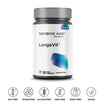
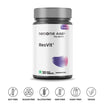
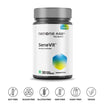
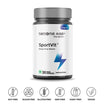
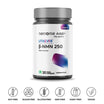

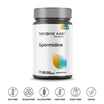
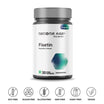
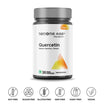

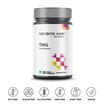
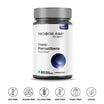


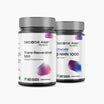
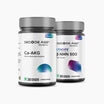
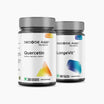

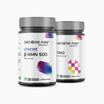
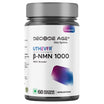
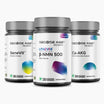
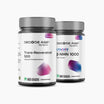
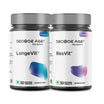
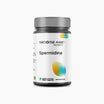
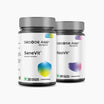
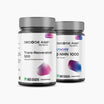


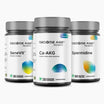

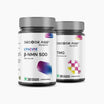

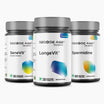
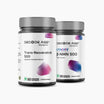



Leave a comment
This site is protected by reCAPTCHA and the Google Privacy Policy and Terms of Service apply.